Please contact our sales team.
For a quote on your custom requirements please send us your drawing or specification.
Bi-Convex Lenses
Bi-convex lens with positive focal length is a biconvex lens lens with an incident and an emergent surface, characterized by a longer focal length at the middle of the lens surface and a shorter focal length at the end of the lens surface. It is best suited for situations where the object and image are located on opposite sides of the lens and the ratio of the image to the object distance (conjugate ratio) is between 0.2 and 5.
Biconvex lenses are primarily used to converge light from point sources or to transmit images to other optical systems. They are also commonly used in the manufacture of optical instruments such as telescopes and microscopes.
CLZ Optical Co., Ltd. stocks Bi-Convex Lenses ranging from 10mm to 250mm in diameter with a full range of focal lengths to meet your needs. We can also customize optical components to meet your requirements using a variety of optical materials, such as optical glass, fused silica, silicon.
![]()
Please contact our sales team.
For a quote on your custom requirements please send us your drawing or specification.
CUSTOM COATING OPTIONS >
CUSTOM OPTIONS >
EDGING & BLACKEN OPTION >
CUSTOMIZED PROCESSING CAPABILITY >
-Single layer magnesium fluoride coating
-Broadband anti-reflection (BBAR)
-Single wavelength AR coating (V-coating)
-Dual-band AR coating (W-coating)
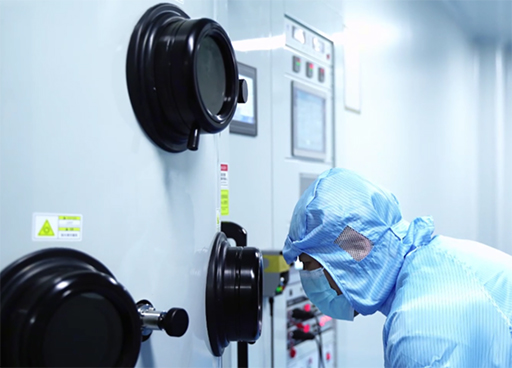
Materials: Optical Glass, Fused Silica and Silicon
Dimensions: Diameters 10mm to 250mm
Edge Finish: Blackened
Surfaces: 80-50 to 20-10 Scratch dig
Centration: To 30 seconds
Irregularity: To 1/10 waves
Coating Options: Single & multi layer AR coatings
We can modifying diameter of lenses and blacking edge in stock optics to meet your requriments.
This can achieve:
The stock optics diameter from large to small and tighter diameter tolerance.
Coated Area is a continuous coating extending to the edges of the optical component. (Edge after coating)
Edge-blackened lenses, or inked lenses, minimize the stray light within an optical system.
We can customize spherical lenses for customers according to their specific needs. The following are our customized processing capabilities for spherical lenses&Production equipment and measuring instruments:
Parameter | Processing Capabilities | Metrology Equipment |
Diameter | 10mm - 260mm | High-Accuracy Digital Micrometer |
Radius | λ/2 @632.8nm | ZYGO Verifire Laser Interferometer |
Surface accuracy | λ/10 @632.8nm | ZYGO Verifire Laser Interferometer |
Focal Length | ±0.5% | Digital focal length measuring instrument |
Centration | <30 arcsec | Digital centration measuring instrument |
Surface Quality | 10-5 | Scratch-Dig Visual Comparison Board |
Coating | Broadband AR Coating | Agilent Cary 5000 Spectrophotometer |
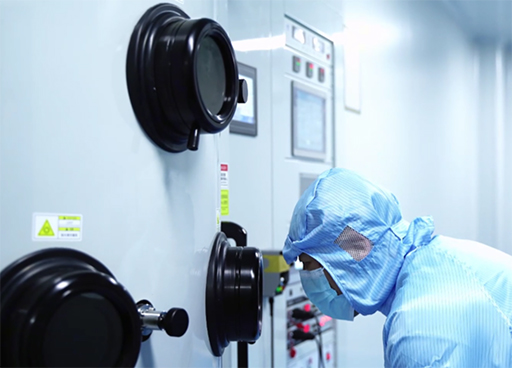
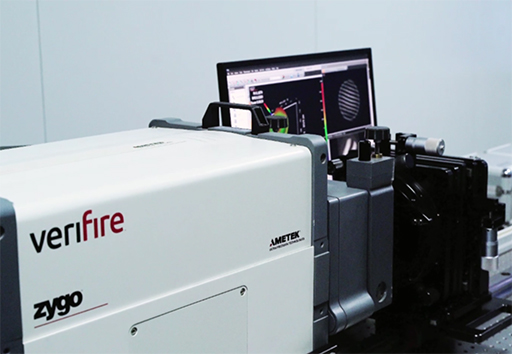
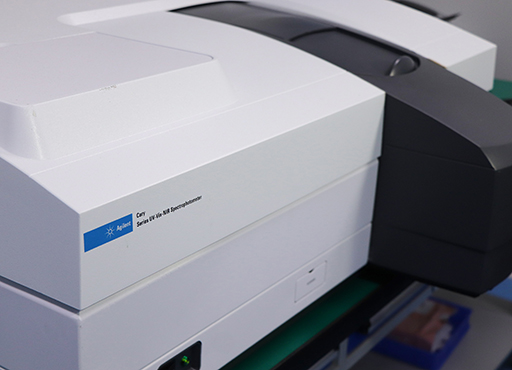
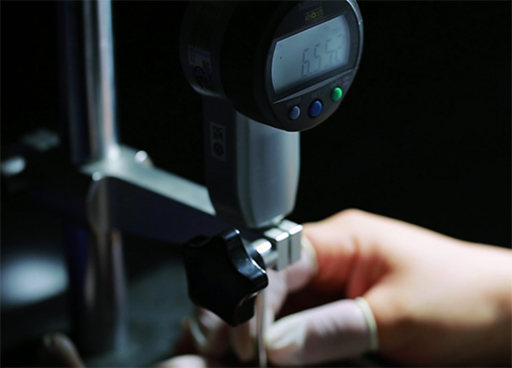
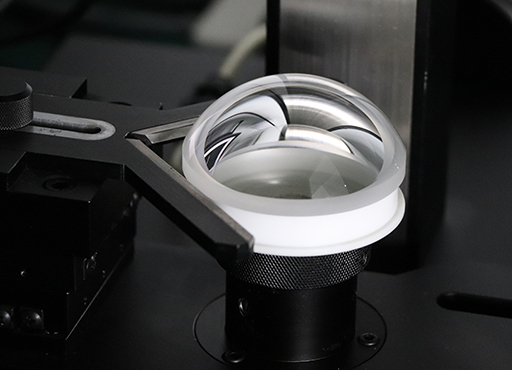
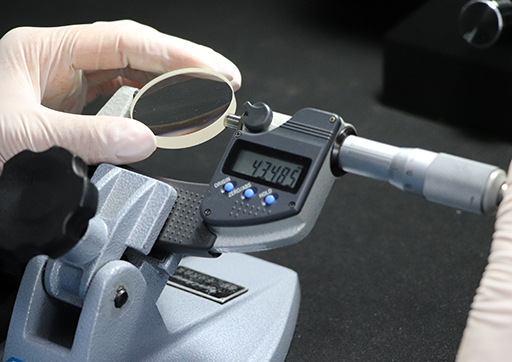
Please contact us for discount pricing for stock parts over 10+ and volume/OEM quantities
| Type No. | Data sheet | Material | Diameter (mm) | Coating | EFL (mm) | CT (mm) | |
|---|---|---|---|---|---|---|---|
| L‐DX0060750100 | PDF > | BK7 or equivalent | 100.00 | BBAR Ravg<0.5% AT 750-1500nm | 750.00 | 8.20 | |
| L‐DX0060200100 | PDF > | BK7 or equivalent | 100.00 | BBAR Ravg<0.5% AT 750-1500nm | 200.00 | 16.30 | |
| L‐DX0060100100 | PDF > | BK7 or equivalent | 100.00 | BBAR Ravg<0.5% AT 750-1500nm | 100.00 | 32.70 | |
| L‐DX006075076Z | PDF > | BK7 or equivalent | 76.20 | BBAR Ravg<0.5% AT 750-1500nm | 750.00 | 5.30 | |
| L‐DX006010076Z | PDF > | BK7 or equivalent | 76.20 | BBAR Ravg<0.5% AT 750-1500nm | 100.00 | 18.05 | |
| L‐DX0060750075 | PDF > | BK7 or equivalent | 75.00 | BBAR Ravg<0.5% AT 750-1500nm | 750.00 | 5.30 | |
| L‐DX0060064040 | PDF > | BK7 or equivalent | 40.00 | BBAR Ravg<0.5% AT 750-1500nm | 64.00 | 8.30 | |
| L‐DX006012525Z | PDF > | BK7 or equivalent | 25.40 | BBAR Ravg<0.5% AT 750-1500nm | 125.00 | 4.25 | |
| L-DX006005012Y | PDF > | BK7 or equivalent | 12.50 | BBAR Ravg<0.5% AT 750-1500nm | 50.00 | 2.30 | |
| L‐DX0050750100 | PDF > | BK7 or equivalent | 100.00 | BBAR Ravg<0.5% AT 630-1100nm | 750.00 | 8.20 | |
| L‐DX0050200100 | PDF > | BK7 or equivalent | 100.00 | BBAR Ravg<0.5% AT 630-1100nm | 200.00 | 16.30 | |
| L‐DX0050100100 | PDF > | BK7 or equivalent | 100.00 | BBAR Ravg<0.5% AT 630-1100nm | 100.00 | 32.70 | |
| L‐DX005010076Z | PDF > | BK7 or equivalent | 76.20 | BBAR Ravg<0.5% AT 630-1100nm | 100.00 | 18.05 | |
| L‐DX005075076Z | PDF > | BK7 or equivalent | 76.20 | BBAR Ravg<0.5% AT 630-1100nm | 750.00 | 5.30 | |
| L‐DX0050750075 | PDF > | BK7 or equivalent | 75.00 | BBAR Ravg<0.5% AT 630-1100nm | 750.00 | 5.30 | |
| L‐DX0050064040 | PDF > | BK7 or equivalent | 40.00 | BBAR Ravg<0.5% AT 630-1100nm | 64.00 | 8.30 | |
| L‐DX005012525Z | PDF > | BK7 or equivalent | 25.40 | BBAR Ravg<0.5% AT 630-1100nm | 125.00 | 4.25 | |
| L-DX005005012Y | PDF > | BK7 or equivalent | 12.50 | BBAR Ravg<0.5% AT 630-1100nm | 50.00 | 2.30 | |
| L‐DX0040750100 | PDF > | BK7 or equivalent | 100.00 | BBAR Ravg<0.8% AT 400-900nm | 750.00 | 8.20 | |
| L‐DX0040200100 | PDF > | BK7 or equivalent | 100.00 | BBAR Ravg<0.8% AT 400-900nm | 200.00 | 16.30 | |
| L‐DX0040100100 | PDF > | BK7 or equivalent | 100.00 | BBAR Ravg<0.8% AT 400-900nm | 100.00 | 32.70 | |
| L‐DX004075076Z | PDF > | BK7 or equivalent | 76.20 | BBAR Ravg<0.8% AT 400-900nm | 750.00 | 5.30 | |
| L‐DX004010076Z | PDF > | BK7 or equivalent | 76.20 | BBAR Ravg<0.8% AT 400-900nm | 100.00 | 18.50 | |
| L‐DX0040750075 | PDF > | BK7 or equivalent | 75.00 | BBAR Ravg<0.8% AT 400-900nm | 750.00 | 5.30 | |
| L‐DX0040064040 | PDF > | BK7 or equivalent | 40.00 | BBAR Ravg<0.8% AT 400-900nm | 64.00 | 8.30 | |
| L‐DX004012525Z | PDF > | BK7 or equivalent | 25.40 | BBAR Ravg<0.8% AT 400-900nm | 125.00 | 4.25 | |
| L-DX004005012Y | PDF > | BK7 or equivalent | 12.50 | BBAR Ravg<0.8% AT 400-900nm | 50.00 | 2.30 | |
| L‐DX0030750100 | PDF > | BK7 or equivalent | 100.00 | BBAR Ravg<0.35% AT 420-680nm | 750.00 | 8.20 | |
| L‐DX0030200100 | PDF > | BK7 or equivalent | 100.00 | BBAR Ravg<0.35% AT 420-680nm | 200.00 | 16.30 | |
| L‐DX0030100100 | PDF > | BK7 or equivalent | 100.00 | BBAR Ravg<0.35% AT 420-680nm | 100.00 | 32.70 | |
| L‐DX003075076Z | PDF > | BK7 or equivalent | 76.20 | BBAR Ravg<0.35% AT 420-680nm | 750.00 | 5.30 | |
| L‐DX003010076Z | PDF > | BK7 or equivalent | 76.20 | BBAR Ravg<0.35% AT 420-680nm | 100.00 | 18.05 | |
| L‐DX0030750075 | PDF > | BK7 or equivalent | 75.00 | BBAR Ravg<0.35% AT 420-680nm | 750.00 | 5.30 | |
| L‐DX0030064040 | PDF > | BK7 or equivalent | 40.00 | BBAR Ravg<0.35% AT 420-680nm | 64.00 | 8.30 | |
| L‐DX003012525Z | PDF > | BK7 or equivalent | 25.40 | BBAR Ravg<0.35% AT 420-680nm | 125.00 | 4.25 | |
| L-DX003005012Y | PDF > | BK7 or equivalent | 12.50 | BBAR Ravg<0.35% AT 420-680nm | 50.00 | 2.30 | |
| L‐DX0020750100 | PDF > | BK7 or equivalent | 100.00 | MgF2 AT 550nm | 750.00 | 8.20 | |
| L‐DX0020200100 | PDF > | BK7 or equivalent | 100.00 | MgF2 AT 550nm | 200.00 | 16.30 | |
| L‐DX0020100100 | PDF > | BK7 or equivalent | 100.00 | MgF2 AT 550nm | 100.00 | 32.70 | |
| L‐DX002075076Z | PDF > | BK7 or equivalent | 76.20 | MgF2 AT 550nm | 750.00 | 5.30 | |
| L‐DX002010076Z | PDF > | BK7 or equivalent | 76.20 | MgF2 AT 550nm | 100.00 | 18.05 | |
| L‐DX0020750075 | PDF > | BK7 or equivalent | 75.00 | MgF2 AT 550nm | 750.00 | 5.30 | |
| L‐DX0020064040 | PDF > | BK7 or equivalent | 40.00 | MgF2 AT 550nm | 64.00 | 8.30 | |
| L‐DX002012525Z | PDF > | BK7 or equivalent | 25.40 | MgF2 AT 550nm | 125.00 | 4.25 | |
| L-DX002005012Y | PDF > | BK7 or equivalent | 12.50 | MgF2 AT 550nm | 50.00 | 2.30 | |
| L‐DX0010750100 | PDF > | BK7 or equivalent | 100.00 | Uncoated | 750.00 | 8.20 | |
| L‐DX0010200100 | PDF > | BK7 or equivalent | 100.00 | Uncoated | 200.00 | 16.30 | |
| L‐DX0010100100 | PDF > | BK7 or equivalent | 100.00 | Uncoated | 100.00 | 32.70 | |
| L‐DX001075076Z | PDF > | BK7 or equivalent | 750.00 | Uncoated | 750.00 | 5.30 | |
| L‐DX001010076Z | PDF > | BK7 or equivalent | 76.20 | Uncoated | 100.00 | 18.05 | |
| L‐DX0010750075 | PDF > | BK7 or equivalent | 75.00 | Uncoated | 750.00 | 5.30 | |
| L‐DX0010064040 | PDF > | BK7 or equivalent | 40.00 | Uncoated | 64.00 | 8.30 | |
| L‐DX001012525Z | PDF > | BK7 or equivalent | 25.40 | Uncoated | 125.00 | 4.25 | |
| L-DX001005012Y | PDF > | BK7 or equivalent | 12.50 | Uncoated | 50.00 | 2.30 |
Now Shopping by
Related Categories
CLZ Optics Co., Ltd. offers a comprehensive range of biconvex lenses tailored to meet your specific needs.
Our product catalog covers a variety of biconvex lenses:
l Uncoated Biconvex Lenses:These lenses are precision-processed optically and suitable for various basic optical experiments and applications. We can provide uncoated or specific coating options according to customer requirements to meet high-end and more complex application needs.
l Coated Biconvex Lenses:
o Single-layer Magnesium Fluoride Coated Biconvex Lenses (suitable for 400-700nm visible light)
o Broadband Anti-Reflection (BBAR) Coated Biconvex Lenses (suitable for 420-680nm)
o Broadband Anti-Reflection (BBAR) Coated Biconvex Lenses (suitable for 400-1000nm, VIS-NIR-1)
o Broadband Anti-Reflection (BBAR) Coated Biconvex Lenses (suitable for 630-1100nm, NIR-1)
o Broadband Anti-Reflection (BBAR) Coated Biconvex Lenses (suitable for 1050-1700nm, VIS-NIR-2)
Customization and Coating Services:
In addition to our standard product catalog, CLZ Optics Co., Ltd. offers customized biconvex lenses and coating services to fulfill your unique requirements. Our expert team will work closely with you to ensure you obtain lenses that meet your performance specifications, coating requirements, and other key parameters.
Applications of Biconvex Lenses:
l Microscope Lenses:Biconvex lenses are often used as objective or eyepiece lenses to achieve magnified observation of tiny objects. The selection and adjustment of parameters such as focal length, object distance, and image distance have a decisive impact on the clarity and magnification of imaging.
l Telescope Lenses:Biconvex lenses are also suitable for telescopes, enabling clear observation of distant objects.
l Photography Lenses:In camera lenses, biconvex lenses are used for focusing and adjusting images to ensure the quality of the captured footage.
l Projector Lenses:Biconvex lenses are utilized to focus light sources and project images onto screens, catering to the needs of teaching and conferencing.
l Scientific Research and Experiments:In experimental physics and optical research, biconvex lenses are frequently used to manipulate and control the propagation of light beams to achieve specific research objectives.